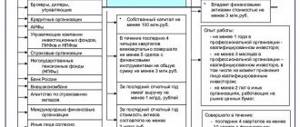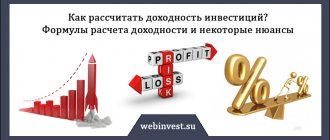Dear readers, today in my blog I will write about the basic concept of investing, it causes confusion among beginners. So, who is an investor, what does he need to invest money on his own and earn money? What is the difference between a qualified investor and an ordinary individual?
According to one sociological survey of Americans over the age of 18 from the 50 states, 52% of them had assets in the form of securities. There are 50 million private investors in Japan, which is 39% of the country's population. In Russia, only 0.77% of citizens participate in trading on the Moscow Exchange. Just imagine that this figure is 2 times lower than in India.
Who is an investor and what does he do?
Investors are direct investors: they decide where to allocate and give money (their own, borrowed or attracted) for the development of a specific object. Of course, there is also a speculative market. But the initial task is to direct the finances to their intended use.
For example, if shares of a plant are purchased, the money will be used to modernize production, develop and produce new products.
Investors can be:
- state, including foreign;
- enterprises of different forms of ownership;
- foundations and organizations;
- individuals.
Of course, there is also the stock market. But this is no longer an investment in its pure form, but speculation.
Purpose and rights of the investor
The goal of any investor is to make money on investments. Often he invests money in a project, in words and promises on paper (opening a hypermarket, for example). Another goal is to solve social problems (housing construction).
All rights of investors are regulated by law. This:
- the right to invest;
- the right to own, use and dispose of objects in a share identical to the invested funds (with reservations);
- the right to independently choose the object and the amount of investment;
- right of control (an investor who owns shares can request financial statements);
- the right to pool capital with other investors;
- the right to transfer rights and investment results (including by will), etc.
Functions
The main function of an investor, no matter how pretentious it may sound, is to stimulate economic development. Even taking into account the fact that the investor comes to the market to make money. And he tries to save on everything: from materials to wages and safety precautions. Supervisory government bodies should work here (but I’ll talk about this in another article).
In addition, the investor:
- structurally restructures and develops a separate industry;
- influences the development of scientific and technological progress (the introduction of modern technology or a complete rejection of modernization, if it is profitable to hire a crowd of unemployed people for simple monotonous work);
- expands reproduction, increases defense capability (more relevant to the investor-state);
- develops financial markets and the banking sector of the economy;
- solves environmental problems (ideally);
- increases employment;
- stimulates the rise of the social sphere (housing construction, medicine, education, sports, etc.);
- promotes international cooperation.
What is investment
Investment is an investment of capital in order to get even more money. For an investor, a good profit is in the amount that:
- initial costs returned;
- the loss from inflation was compensated;
- net profit appeared as compensation for the risk and refusal to use money for consumption.
Sometimes the purpose of investment is not considered to be material gain, but some other useful effect. For example, government investment in the economy of another country. Although the investment may not be returned, the impact on the region, cooperation and support on the international stage are worth it.
Number of private investors in different countries of the world
The global crisis has affected different countries differently. In America, the number of investors is declining: from 65% (in 2007) to 52% (in 2017) and continues to fall.
In European countries, Australia and Canada, the number of private investors is declining. If in Europe there has been an increase in population (refugees begging for benefits rather than investing), then in Australia and Canada people are more likely to choose the real sector (farming, crafts, trade).
In Japan, the popularity of private investment is growing: one way or another, more than 40% of the population consider themselves private investors.
There are few private investors in Russia (judging by the IFAC data), but the trend of interest shows stable growth.
What is an investment portfolio
An investment portfolio is the collective name for several baskets into which a wise owner puts his eggs. The investor distributes investments in different areas of financial activity:
- securities;
- real estate;
- investment gold coins, etc.
This achieves a reduced loss of capital risk and an even higher level of profit.
By the way, the total risk of an investment portfolio is often less than the risks of individual investment instruments within it.
The division of investments according to the degree of risk is very arbitrary. For example, gold has become a highly speculative instrument and is not seen as an inflation hedge.
Therefore, when forming an investment portfolio, only securities are often used. And the concepts of “investment portfolio” and “securities portfolio” are considered equivalent.
Legislative regulation of investment
Before you start investing, it’s a good idea to study the rules of the “game” - the legislation of the country. At least just to understand the capabilities of financial instruments. The main legal acts in Russia are:
- Constitution and Civil Code of the Russian Federation;
- federal laws:
- “On the securities market”;
- “On the protection of the rights and legitimate interests of investors in the securities market”;
- “On investment activities in the Russian Federation, carried out in the form of capital investments”;
- “On foreign investment in the Russian Federation”;
- “On the Central Bank (Bank of Russia).”
FAQ
I will try to answer the questions briefly and clearly.
Where do investors get their money?
Depending on your income, it is realistic to save from 10 to 30% monthly into an investment account. Thus, within a year you will form an investment portfolio that will bring additional income. Whether to withdraw it or reinvest it is up to you.
How do they know where to invest?
Beginners believe that there is free analytics. If you don’t have time to study it, just contact a certified broker who will select the product.
This is an investor's mistake. You shouldn’t rely on the opinions of “talking heads on TV.” Broaden your horizons, notice interesting opportunities and study them as deeply as possible. Dive into an investment idea on your own and don’t ask a broker where to invest!
If you have any more questions or doubts, feel free to ask in the comments. I am glad to help.
In conclusion, I would like to thank everyone who sincerely wants to become a professional investor. There aren't many of us like that. Subscribe to the blog and learn the intricacies of investing.
Main characteristics of investments
Everything can be accounted for and in order. And investments are no exception. University textbooks give an expanded classification, but for beginners it is enough to know the minimum.
By investment form
Investors work in 3 areas:
- financing in tangible assets (real investments). For example, capital construction, vehicles, equipment. Creation and reproduction of fixed assets, including geological exploration, research work, allocation of sites, etc.;
- portfolio investment. The investor works with financial assets:
- shares;
- bonds;
- derivatives, etc.;
- investments in intangible assets (trademark, brand, personnel training, certificate, patents, know-how, etc.).
Speculation, when there is intra-hour or intra-day trading on the stock exchange, does not apply to investments.
By investment period
The investment period, when the invested funds are planned to be returned with a profit, happens:
- short-term (up to a year);
- medium-term (1–3 years);
- long-term (more than 3 years).
By type of ownership of invested resources
The investor is both the state and organizations of various forms of ownership, individuals. Therefore, investments according to the form of ownership of the invested resources are divided into:
- state (budgetary funds, extra-budgetary funds of federal, regional and local authorities, own and borrowed funds of state-owned institutions and enterprises are used);
- private (investors – individuals and private firms);
- foreign (foreign states, legal entities and citizens);
- joint (capitals of Russian subjects are combined with foreign capital).
Who is it
Russian legislation has a clear idea of who is recognized as a qualified investor. These are brokers, banks, funds that specialize in financial support for medium and small businesses.
A private investor is a person who invests his own finances in order to make a profit to improve his standard of living. That being said, there is a key point to remember. The income received must exceed the level of inflation processes, otherwise the main task of increasing capital will not be solved.
Investment by individuals differs from traditional bank lending, when a return on invested funds and interest on their temporary use are guaranteed. When an individual invests assets, there are investment risks of receiving a return that is significantly less than expected or being at a loss.
Most often they choose to invest:
- securities (shares, bonds, bills);
- precious metals;
- real estate;
- promising entrepreneurial projects;
- jewelry, antiques, old coins and more.
Traditional investment objects are characterized by growth in price in the long term, regular payments of dividends on shares or in the form of coupons on bills.
Investor risks
I’ll be honest: investing is a nerve-wracking activity. You hope for an increase in quotes and don’t sell, but the rate reverses, turning a possible jackpot into losses. Therefore, I honestly warn you about the risks in advance.
Investor risk is a situation the outcome of which can be assessed using the frequency or expert method. This distinguishes it from uncertainty, where calculation of probability is not possible.
System
Risks associated not with the investment object, but with factors external to the object, are considered systemic. Figuratively speaking, with the system in the state and the global economy. This:
- inflation;
- changes in exchange rates;
- change in interest rate on government loans, etc.
No matter how hard you try to control and minimize them, it will not be possible.
Non-systemic
Risks related directly to the object will be non-systemic for the investor. This:
- industry;
- business (poor company management);
- credit;
- lost profits, etc.
Such risks can be reduced.
Speculative
Sabotage, collusion of individual investors, irrational behavior of market subjects form a non-market situation. For example, riskier assets (such as securities) should have higher returns. If this is not the case, shareholders may take action to reduce the price (the goal is to buy it cheap).
Legal
The investor's legal risks are associated with changes in legislation. Tax accounting may change, additional costs may be required to purchase a license, and additional requirements for working in this industry may be introduced.
Personal
This is the investor’s personal area of responsibility. The level of his professional training, discipline coupled with resistance to stress. A decision made under the influence of emotions often leads to a loss.
Broker development trends
Now you can see several directions in which private investment instruments launched by banks are developing.
- Integration of brokerage applications and the bank ecosystem. To be able to transfer money in any direction instantly and without commission, link your card. And do it within one application. Implemented in many places, but with varying degrees of success. It is important to work in this direction because seamless user experience is a global trend in the design of online services, so banking applications should not be an exception.
- Seamless user experience. Recently, the Central Bank released open API standards for fintech. Participation in the initiative is voluntary, but if all players join, investment applications will become even more convenient. For example, a user will be able to download one aggregator application and manage accounts in different banks through it or, for example, link an Alfa-Bank account and pay through it for the purchase of shares in Tinkoff Investments.
- Application development for beginners. They are aimed at those who do not have large savings and do not consider investments as a source of income. For them, this is an opportunity to try their hand as an investor and gain real experience. Such applications, as a rule, have very limited functionality, but due to this they have the lowest barrier to entry. You can look at Yammi from Yandex or MTS Investments.
- About safety. Here we are talking mainly about additional protection when withdrawing funds, especially large amounts. This solution is implemented with regular bank cards: when you try to spend or withdraw more than the set amount at a time, you receive a call from a bank employee. You confirm your identity - and only then perform the operation.
In addition, since we are talking about attracting mass users and working on reputation, we need to insure them even more reliably against failures. For example, introduce intelligent algorithms for tracking transactions and eliminate those cases when a user impulsively buys Apple shares with all his money or makes some other unusual movements. He can simply get excited, like in a casino, and we all know the result - a negative investment experience and a deleted application. AI is already helping Sber personalize applications and assess credit risks - why not make it work for security as well.
Investor assets
Investors' assets are what generate monetary benefits and can be used to generate cash.
Stock
Shares are issued by companies to raise additional funds. These are securities that certify the investor’s right to:
- making a profit (dividends);
- participation in management;
- part of the property (in the amount of a share) in bankruptcy.
Preferred shares (prefactions) guarantee only the receipt of dividends, and in the event of liquidation of the enterprise they give a preferential right to compensation. Such shares do not provide the investor with voting rights.
Bonds
Bonds are debt securities. The investor provides loans to the state, regional and local authorities, and companies. Receives income in the form of interest.
Income can be paid:
- one-time (then this is the difference between the purchase and nominal value);
- regularly (coupon payments).
Real estate
Real estate is the favorite asset of the novice investor. But these are not only buildings and structures. According to the Civil Code of the Russian Federation, this is also:
- enterprises as a property complex;
- land;
- subsoil areas;
- isolated water bodies;
- perennial plantings, etc. - everything that is firmly connected to the ground, stands, is located inside or outside.
It is simply impossible to move an investment object without significant costs. For example, moving a pond means (simplified):
- create and approve a project;
- dig a pit, strengthen the bank;
- drain and bury the old pond.
From a legal point of view, real estate includes property to which rights are registered (property, lifelong ownership, easement, mortgage).
By the way, aircraft and sea vessels, inland navigation vessels, space objects (all subject to state registration) are classified as real estate - on earth these are “standing” objects. But money and securities - no.
Commodity assets
Investor's commodity assets include precious metals and stones, as well as commodities. Don’t be confused: if a person buys a batch of goods and then sells it, this is trade, not investment.
This also includes alternative investments: collectible wines, antiques, art objects.
Investment fund
The investment fund attracts funds from investors to co-finance investment projects. Through this asset, investment objects for which a private owner simply would not have enough funds become indirectly available.
mutual fund
A mutual investment fund is:
- a separate property complex transferred to a management company with the condition of combining it with the property of other investors;
- property received during the management process.
Ownership is confirmed by a security issued by the management company.
The main income of a mutual fund consists of the increase in the value of the share over time.
mutual fund
The investments of small investors form a mutual fund. Essentially, this is an investment portfolio formed by a professional manager. In addition, investments are distributed among a large number of objects, so the risk factor for a small investor is reduced.
Hedge fund
An investment asset for a select few, the task of which is to minimize risks at a specified return (or obtain maximum return at a given risk). A high entry fee and (often) proof of ownership are required.
ETF
Or Exchange Traded Fund. An investor invests in an exchange-traded fund by purchasing shares on an exchange.
How much does a specialist earn?
And again we come up against the broadness of the concept of the term “investor,” which can include a hired trader, analyst, financial manager, and even company manager.
For clarity, we will focus only on traders who trade currencies, securities and contracts on various exchanges, which has a specialization as close as possible to investments:
- in Moscow they are ready to offer a hired trader an average of 80 thousand rubles per month;
- in the regions, a trader’s salary tends to 50-30 thousand rubles.
The above-mentioned specialists, who we conditionally equate to investors, receive income in approximately the same ratios.
As for private investors who invest their capital, their income directly depends on the amount of investment , interest received and professional skills. It is the latter that make it possible to most effectively increase capital with a moderate level of risk, from which no investor is insured.
Types of Investors
There are 4 groups:
- non-financial companies in construction, manufacturing, trade, and services. Investment decisions are based on business development strategy. These are capital investments, modernization of production, cost reduction. Or purchasing control over other companies (shares of companies in the same industry);
- state and sovereign funds. Investments in the development of certain sectors of the economy, financial investments in the domestic and foreign markets;
- professional investors or financial intermediaries. Accumulate funds from other investors and invest them in investment market objects;
- private investors (public). They view the market as an opportunity to accumulate savings.
How to look for reviews of loans from individuals
Now, in the age of the Internet, getting information is easier than ever. Using the Internet, you can find trusted private lenders in Moscow, reviews of which will be generally positive. And not only in Moscow, but throughout Russia.
Nothing complicated. You just need to follow the instructions
If the ad only provides an email address without a telephone number, ignore such offers. A normal investor provides complete information; he is interested in actually issuing a loan.
1. If you are looking for a lender on special message boards. Copy the phone number from the ad and enter it into a search engine. You can find a lot of interesting information, including reviews from those who took out loans from individuals. More precisely, I tried to take it and was faced with a request for an advance payment.
2. If you called from a regular advertisement, of which there are many throughout the city. Usually an appointment is made. With it, be sure to find out the name of the creditor (let him confirm it with his passport). You can immediately type into a search engine from your phone, for example, “private investor Oleg Georgievich Khmylev reviews.” If the information is there, it will come out.
3. If you are invited to an interview in the office. Likewise, read reviews about these private loans by entering the office address in the search. If an investor runs his own website, you can enter the resource address into the search engine.
If you are looking for reviews of private loans in Moscow and other cities, look for the lender’s “traces” on the Internet. It is also better to rely on the recommendations of someone you know. It’s good if there is at least one person in your circle who has used the services of private investors and can share positive experience. His review of private loans will be the most informative for you.
The best and proven investment options
A proven option for an investor is to search for undervalued assets (in financial jargon - “cigarette butts”). The purchase and subsequent sale bring a good income. The second option is to purchase at fair value with further increase in value.
Choose, for example:
- purchase of real estate upon sale of collateral;
- investment portfolio with the top ten domestic companies in various sectors of the economy;
- an undervalued collection of wines, paintings, gold coins, etc.
Should we believe positive reviews about private loans?
If you study reviews about private loans in Moscow or in any other city, be objective; you cannot blindly trust them. Now anyone can buy positive reviews on special exchanges; many companies and service providers use them.
If the information is too laudatory, if only positive odes are sung to the investor, these are definitely bought opinions. Normal reviews are neutral and specific. If positive reviews are diluted with negative ones, this is also normal, as long as there is no direct indication of fraud in the negative ones.
Be objective; you cannot blindly trust reviews. They can be purchased
Examples of successful investments
An acquaintance of mine learned that it was decided to demolish part of the city center and build new luxury housing. He bought up the most dilapidated housing and registered (for a fee) relatives. During the demolition, everyone was provided with new housing, which was successfully sold.
Another successful deal is leasing (rent with option to buy) of the plant. A loan with a one-year deferred payment was issued for this case. Taking into account the sharp jump in the dollar exchange rate, the obligations were repaid in 3 years.
Real investment failures
Oh. Although failures are inevitable, losing money is always a nuisance. Motor Sich shares. The political situation in Ukraine led to the fact that the walls of the plant remained. What can we say about dividends on securities.
A step-by-step guide to becoming a good investor from scratch
For a good investor, discipline and compliance with the law (regulations or rules) come first, and the absence of losses comes second. And only in third place is the profitability of the operation. Here are recommendations from successful investors to beginners:
- Study as much literature on investments, markets, instruments as possible. The direction of work will become clear (there is no need to initially focus on yachts, gold, factories with pipes);
- find specialized forums. On “branches” real people share their experiences;
- Don’t be lazy, open up the legislation. Ignorance of the laws does not exempt you from responsibility;
- remember: the higher the risk, the higher the return. So make a plan and start with low-risk operations;
- determine the limit amount of losses;
- Having collected sufficient capital, begin to separate areas of investment (investment portfolio);
- monitor the market situation.
The main thing is to learn to think like an investor. Look around, assessing opportunities for profit.
Books on investing for beginners
Investment textbooks are written in boring language, with the right situations (as they should be). The reality is different, sometimes significantly. For beginners I recommend:
- “Stock trading for dummies”, authors M. Griffis, L. Epstein. Basic information is given, briefly and without gibberish;
- "The Peter Lynch Method. Strategy and tactics of the individual investor." The author, of course, financial manager P. Lynch, with subtle humor, leads to the ability to think like an investor;
- "Investor's Guide to Russia." Author Shlyaev A.V. recommends a book for residents of regions where there are fewer opportunities;
- “Principles of passive investing, or 5 simple rules for those who want to start investing, but don’t know where to start.” Roman Akentyev offers clear strategies for long-term investments.
“You can’t fit a dollar between a sofa and a sitting butt” - who is this about?
If a person engages in self-education and studies foreign languages, then in the future he can easily avoid senile dementia. Unlike those who spend all their free time from work on the couch.
If we look at this topic from the perspective of investing in the time allotted by life, then both of these people are investors. Moreover, everyone will receive exactly what they invested their strength, capabilities and life skills into.
Anyone who has invested in self-development and personal growth will be a sought-after specialist even in old age. As opposed to someone who spent his time just lying on the couch watching TV.
They usually say about such people: you can’t fit a dollar between the sofa and your seated butt. Most likely, such a person will spend the rest of his life without money and in a hospital bed.
How to find an investor for your business idea
The opposite situation happens: there is an idea, but no money for implementation. You can take out a loan from a bank. To do this you need:
- register as an individual entrepreneur (minimum);
- In addition to standard banking requirements for documents, present a business plan.
The money is given not for the purchase of household appliances, but for the implementation of the project. Therefore, the development of an investment plan must be thought out to the smallest detail.
Another option is crowdfunding. The description of the project is posted on the Internet. Those who wish transfer money. There are sites specializing in project support. The following are published there:
- projects;
- the amount of funds needed;
- stages of implementation (with photo, video report).
Using the same principle, you can start a video project. And below we invite those who wish to list donations.
Community organizations often provide grants. If the business idea interests you, get the required amount.











